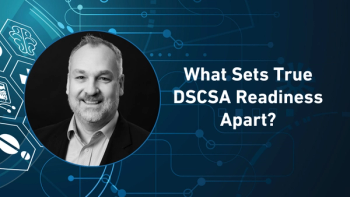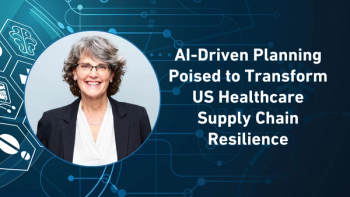
Why Data Should Be a Top Priority
MIT’s Barbara Wixom, PhD, outlines the importance of data-powered research in producing financial success.
Michael Wong: As the MIT Sloan Center for Information Systems Research (MIT CISR) has shared, “The goal of a digital business transformation is to improve customer experience and be more efficient; we call the companies that have learned to do both "’future ready.’" These future-ready companies are top performers, reporting estimated average revenue growth of 17.3 percentage points, and a net margin of 14 percentage points above their industry average—a big premium. As you lead the MIT CISR data research, along with the center’s Data Research Advisory Board, what steps should readers take to build such a future-ready culture and organization?
Wixom: C-suites need to take the lead by recognizing and communicating that their data assets need to be used in ways that produce financial returns. In other words, they need to ensure that their company’s data assets are monetized. The term data monetization is not a bad term, but a neutral one. All companies—from Fortune 500s to non-profits—are amassing loads of data, and it would be irresponsible not to create value from such an important and prevalent organizational resource. Future-ready companies naturally engage heavily in data monetization to achieve their customer experience and efficiency outcomes. But it’s never too soon for any company, regardless of where they fall on the digital spectrum, to begin learning. Our research found that top-performing companies of all kinds attribute 10 percentage points more to data monetization than bottom-performers.
Smarter organizations appreciate that it takes investment and time to establish and activate a data monetization strategy. For instance, Anthem (now Elevance Health) spent a year laying foundations to monetize its patient health data. It had to deidentify, cleanse, secure, and establish permissioning for millions of patient records to enable researchers, start-ups, and other partners to collaborate on artificial intelligence (AI)-based solutions for disease prevention. The resulting innovation platform led to new capabilities and solutions that the company could use to achieve better patient health outcomes. Data monetization efforts like this one can help companies develop more efficient work, craft better customer (patient) experiences, and even deliver new solutions (via new business models) that can be sold to others in the industry.
Wong: While several C-suites highlight the future potential value of digital transformation at their firms, actually monetizing the assets is often a different story. What are your top three practical recommendations for the monetization of assets which readers can begin deploying during this second half of 2023?
Wixom: I’ll give you one practical recommendation: start now. But I will give you three practical ways to make that happen. Here is a simple but effective framework that has resonated with my students and data board. You can monetize data in three ways: improving, wrapping, and selling [as I note in my book, “Data is Everybody’s Business”].
First, improving leverages data to create efficiencies in work from better, cheaper, or faster operations. For your sector, consider how forward-thinking organizations are using data to improve daily operations such as by reducing staffing needs (nurse response optimization), lowering the cost of medical product expenses (spend analytics), and improving hospital recovering times (infection rate reduction). Realizing value from such efforts requires removing or redirecting the slack created by the efficiencies so that they flow to the organization’s bottom line.
Second, wrapping draws on data to enhance an existing offering such that clients buy more, stay longer, or are willing to pay a premium. With the continued changes in the bio-pharma industry such as the recent momentum to broaden access of certain medicines via over the counter versus the historical model of needing a physician’s prescription, how can data and insights motivate target audiences to make that change? Moreover, how can a company leverage data insights to provide new experiences? Think informative patient portals and smart-hospital room interactions.
Third, selling is the exchange of an information solution for some form of money. By doing so, realizing value is straightforward and appears in the form of new financial inflows. Back in the day, selling meant selling data sets. Today, companies prefer to keep and protect their data and instead sell information solutions (patient health monitoring) based on their data assets.
How can you get started learning? Pick a data monetization approach that fits best with your company’s financial needs. Need to lower costs? Consider improving. Need to improve customer satisfaction scores? Consider wrapping. Need to grow? Maybe selling can help. Then, as you develop, execute, and monitor data monetization activities, you will build capability muscle that will serve you well in a “future-ready” world. My hope is that “Data is Everybody’s Business” will be a helpful tool for leaders as they develop managerial acumen in converting their loads of data into fruitful data assets.
Barbara Wixom, PhD leads the MIT CISR Data Research Advisory Board, comprised of data and analytics executives from MIT CISR organizations. The board prioritizes, informs, and participates in data research activities in ways that influence findings and insights at MIT CISR and in the broader global academic community. Dr. Wixom received her PhD from the University of Georgia.
Michael Wong is an emeritus board member of the Harvard Business School Healthcare Alumni Association.
Newsletter
Stay ahead in the life sciences industry with Pharmaceutical Commerce, the latest news, trends, and strategies in drug distribution, commercialization, and market access.





